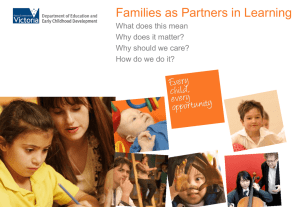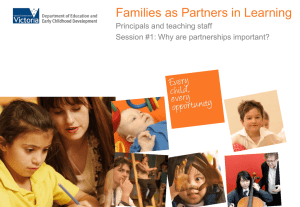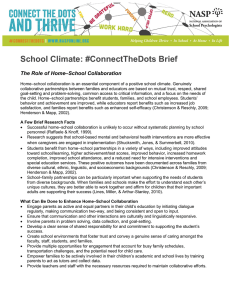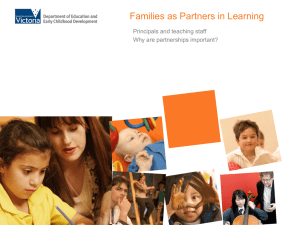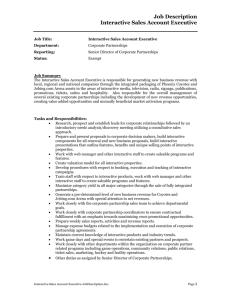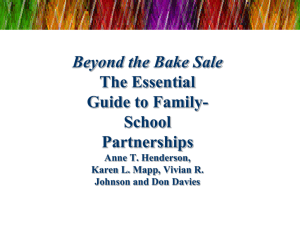Climate extends beyond the walls of the classroom or the school
advertisement
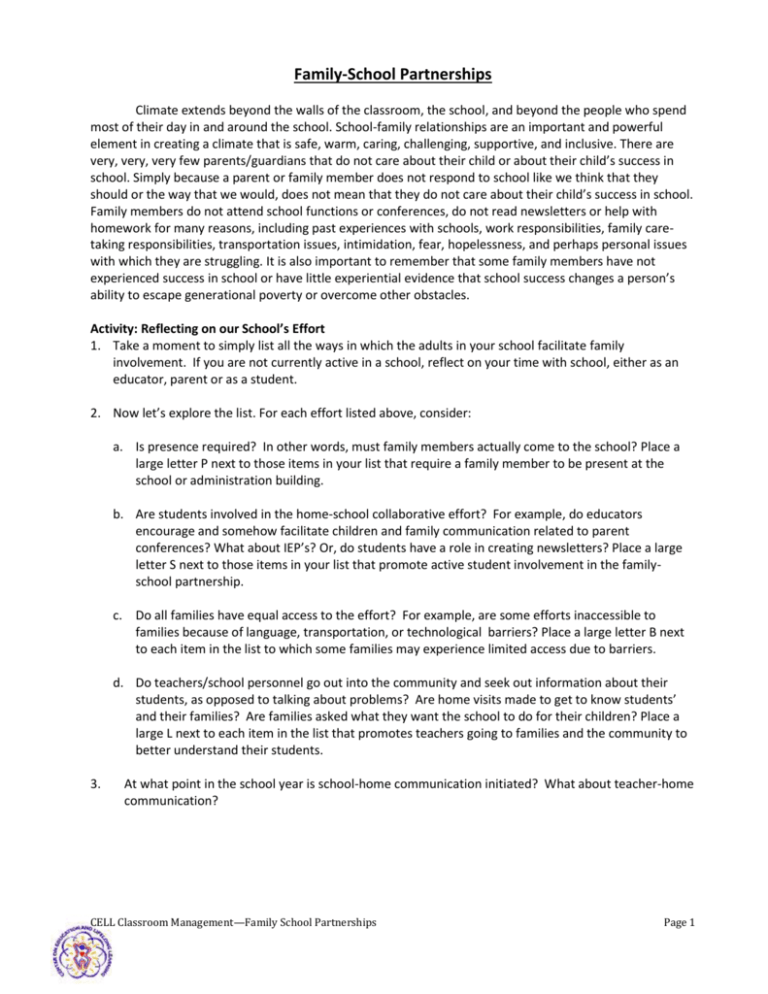
Family-School Partnerships Climate extends beyond the walls of the classroom, the school, and beyond the people who spend most of their day in and around the school. School-family relationships are an important and powerful element in creating a climate that is safe, warm, caring, challenging, supportive, and inclusive. There are very, very, very few parents/guardians that do not care about their child or about their child’s success in school. Simply because a parent or family member does not respond to school like we think that they should or the way that we would, does not mean that they do not care about their child’s success in school. Family members do not attend school functions or conferences, do not read newsletters or help with homework for many reasons, including past experiences with schools, work responsibilities, family caretaking responsibilities, transportation issues, intimidation, fear, hopelessness, and perhaps personal issues with which they are struggling. It is also important to remember that some family members have not experienced success in school or have little experiential evidence that school success changes a person’s ability to escape generational poverty or overcome other obstacles. Activity: Reflecting on our School’s Effort 1. Take a moment to simply list all the ways in which the adults in your school facilitate family involvement. If you are not currently active in a school, reflect on your time with school, either as an educator, parent or as a student. 2. Now let’s explore the list. For each effort listed above, consider: a. Is presence required? In other words, must family members actually come to the school? Place a large letter P next to those items in your list that require a family member to be present at the school or administration building. b. Are students involved in the home-school collaborative effort? For example, do educators encourage and somehow facilitate children and family communication related to parent conferences? What about IEP’s? Or, do students have a role in creating newsletters? Place a large letter S next to those items in your list that promote active student involvement in the familyschool partnership. c. Do all families have equal access to the effort? For example, are some efforts inaccessible to families because of language, transportation, or technological barriers? Place a large letter B next to each item in the list to which some families may experience limited access due to barriers. d. Do teachers/school personnel go out into the community and seek out information about their students, as opposed to talking about problems? Are home visits made to get to know students’ and their families? Are families asked what they want the school to do for their children? Place a large L next to each item in the list that promotes teachers going to families and the community to better understand their students. 3. At what point in the school year is school-home communication initiated? What about teacher-home communication? CELL Classroom Management—Family School Partnerships Page 1 Family-School Partnerships (cont.) Problem Behaviors and Home Gaining support and collaboration from home on issues related to individual student behavior can be greatly enhanced if someone from the school has personally communicated with parents/family BEFORE a student demonstrates behavior that results in someone from the school “needing” to contact parents. Action: 1. Find out which students on your class roster have received referrals to the office or engaged in behavioral infractions in the past. 2. In addition to finding other ways to provide more support to these individuals, consider calling or sending a note home to their family within the first week of school. a. In the note, phone message, or conversation, simply offer specific praise for something done well. All children will do something well within the first week of school. If you have doubts, orchestrate an opportunity for a student to do a good deed. b. During this initial contact also communicate to the family member that you are looking forward to having their child in class and working with them. c. Invite them to contact you if they become concerned about anything, and tell them you would like to do the same. Conferences. School-family meetings related to problem behavior are typically: Too uninviting Too unwelcoming Too adversarial Too big Too broad Too light on goals Too focused on reporting Too much about the problem Too light on problem solving Too light on identifying supports Action: When planning and conducting meetings: Consider inviting fewer, rather than more, people. Start with something that is actually going well. Use a problem solving model. Value and facilitate parent input. Focus on ONLY one or two issues. Define the problem in specific observational terms. Figure out a way to attend to strengths. Invite students to participate, or at least facilitate his/her meaningful participation in putting together a plan. Reach consensus on a time-line for evaluating implementation and outcomes of plan. Make family member feel welcome o Have someone meet and greet the family member in the front office o Have family member enter room of people not yet seated. o Offer a file folder, pen, and paper to the family member. The folder should contain any information that will be referenced during the meeting CELL Classroom Management—Family School Partnerships Page 2
